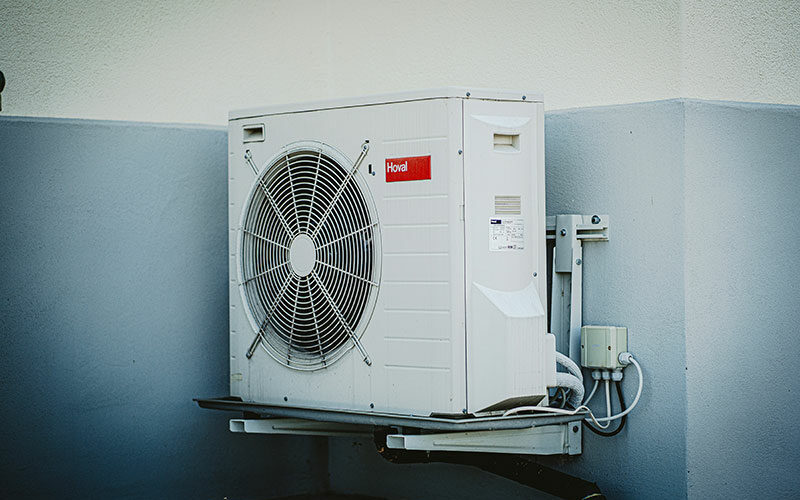Advertisement
Indoor air quality has increasingly become a focal point for health-conscious individuals and organizations worldwide. As people spend a significant portion of their lives indoors, the air quality they breathe can profoundly affect their health, productivity, and overall well-being. Advances in technology and a deeper understanding of air quality’s impact on health have led to innovative solutions and trends in indoor air quality control.
This exploration delves into the latest developments and methodologies setting new standards for creating healthier indoor environments.
Emphasis on Whole-Home Solutions
Whole-home solutions are gaining traction in the pursuit of superior indoor air quality. These systems integrate seamlessly with heating, ventilation, and air conditioning (HVAC) frameworks to purify and manage air throughout the living space.
Typically, HVAC experts are at the forefront of this trend, advocating for comprehensive approaches that filter out pollutants and maintain optimal humidity and temperature levels, crucial factors in indoor air quality. The focus has shifted from standalone air purifiers to integrated systems that ensure consistent air quality in every room.
Smart Technology Integration
Integrating smart technology into air quality control systems represents a significant leap forward. Smart thermostats and air purifiers with advanced sensors and IoT connectivity offer unprecedented control over the indoor environment. These devices can monitor various parameters, such as particulate matter, VOC levels, and carbon dioxide concentrations, adjusting settings in real time for optimal air quality.
The ability for users to track and manage their indoor air through smartphone applications has enhanced convenience and raised awareness about the importance of air quality.
Sustainable and Green Solutions
The surge in environmental consciousness has propelled the demand for eco-friendly approaches to maintaining indoor air quality. Embracing sustainability, these practices utilize energy-efficient systems and also harness renewable energy sources, thereby minimizing energy consumption and reducing the ecological footprint. The adoption of natural air purification strategies, such as the integration of plants within indoor environments, taps into the innate ability of flora to filter out pollutants to enhance air quality naturally.
This shift towards green solutions reflects a holistic approach, where indoor environment health is aligned with environmental stewardship principles, leveraging technology and nature in harmony to foster cleaner, healthier air.
Advanced Filtration Technologies
Filtration technology has seen substantial advancements, with HEPA filters no longer being the sole standard for high-efficiency air purification. New materials and designs, such as activated carbon filters and electrostatic precipitators, are proving effective at capturing a broader range of pollutants, including fine particulates, allergens, and microbial contaminants. These innovations can provide a more comprehensive approach to air purification, addressing various indoor air quality concerns.
Focus on Indoor Air Health
The concept of indoor air health extends beyond simply removing contaminants from the
environment. It encompasses a holistic view of how air quality affects human health, comfort, and productivity. This perspective has led to a surge in research and development efforts to understand the complex relationship between indoor air quality and health outcomes.
As a result, there’s a growing emphasis on solutions that purify the air and enhance its beneficial properties, such as optimal humidity levels and the introduction of negative ions.
Regulatory and Standards Evolution
The indoor air quality regulation landscape is undergoing significant transformation, driven by new research and technological breakthroughs. Recognizing the pivotal role of air quality in public health, governmental and international entities are stepping up to enact more stringent air quality standards for residential and commercial buildings. This proactive regulatory shift catalyzes innovation within the HVAC and air purification sectors, compelling them to devise solutions that comply with these elevated standards and push the envelope in air quality enhancement.
By mandating rigorous air quality criteria for new constructions and renovations, these updated regulations aim to safeguard the health and well-being of occupants, ensuring that indoor environments become sanctuaries of clean air, free from pollutants that could compromise human health.
Customization and Personalization
In indoor air quality management, a one-size-fits-all solution is increasingly recognized as insufficient to meet the varied demands of different spaces and individuals. This has given rise to the trend of customization and personalization in air quality control systems, allowing users to tailor their environments to their specific needs. Whether it’s adjusting for individual health sensitivities, accommodating the unique characteristics of a building’s location and materials, or responding to the particular activities conducted within a space, customizable air quality systems offer a level of precision that generic solutions cannot.
This approach enhances the efficacy of air quality management. It empowers individuals and organizations to create indoor environments that are optimally tuned to promote health, comfort, and well-being, reflecting a deep understanding of the diverse factors that influence indoor air quality.
Conclusion
The landscape of indoor air quality control is rapidly evolving, shaped by technological advancements, environmental awareness, and a deeper understanding of health implications. The latest trends emphasize integrated solutions, innovative technology, sustainability, advanced filtration, and a holistic approach to health and well-being. As these trends continue to develop, they promise to deliver more effective, personalized, and environmentally friendly ways to ensure the air people breathe indoors is clean and healthy.

